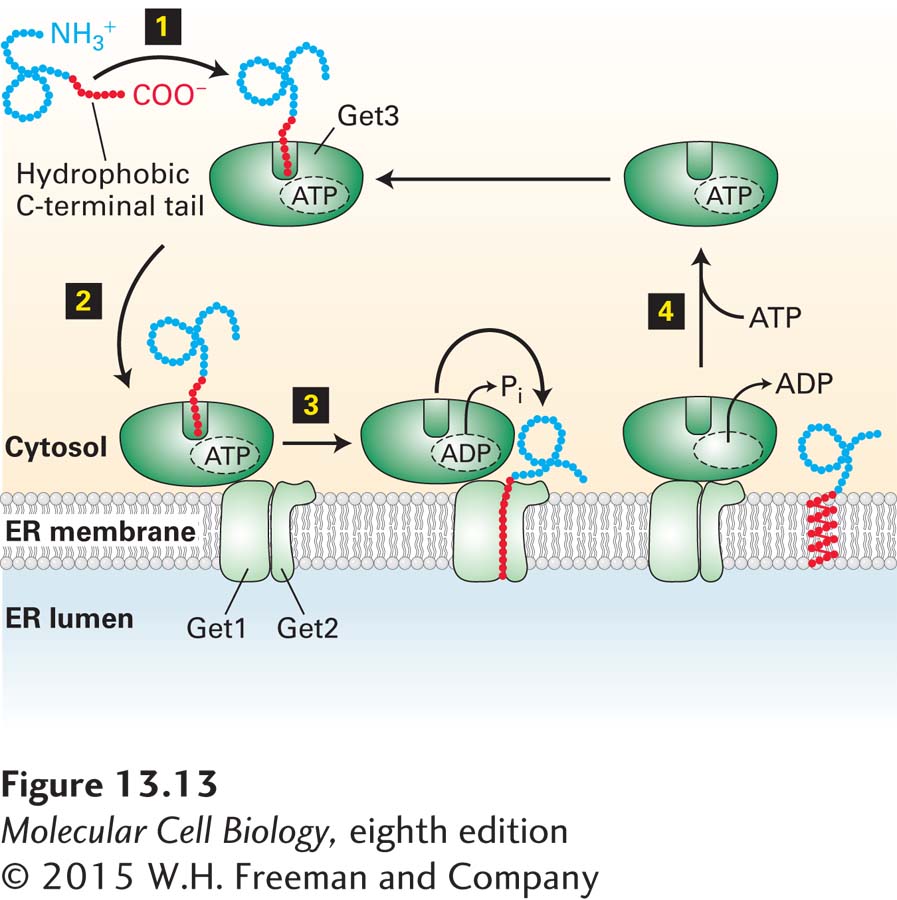
FIGURE 13- 13 Insertion of tail- anchored proteins. For C- terminal tail- anchored proteins, the hydrophobic C- terminus is not available for membrane insertion until protein synthesis is complete and the protein has been released from the ribosome. Step 1: Get3 in an ATP- bound state binds to the hydrophobic C- terminal tail of the protein. This binding reaction is facilitated by a complex of three other proteins, Sgt2, Get4, and Get5, which sequester the hydrophobic C- terminal tail before transferring it to Get3·ATP (not shown). Step 2: The ternary complex Get3·ATP bound to the protein docks onto the dimeric Get1/Get2 receptor, which is embedded in the ER membrane. Step 3: In succession, ATP is hydrolyzed and ADP is released from Get3. At the same time, the hydrophobic C- terminal tail is released from Get3 and ultimately becomes embedded in the ER membrane in a process that is facilitated by Get1/Get2. Step 4: Get3 binds to ATP and Get3·ATP is released from Get1/Get2 in a soluble form, ready for another round of binding to a hydrophobic C- terminal tail.
[Leave] [Close]